An Introduction to the Introduction
My name is Martin Dubuc. I have been playing Magic since Fifth Dawn. For some obscure reason, I was drawn very early on to the multiplayer format, playing Emperor at drafts and free-for-all with friends. The first decks I created were 60-card decks with a multiplayer focus. When MTGO grew in popularity, I played Standard for a while, and really enjoyed it, but after a couple of rotations, I just could not bear cleaning the slate every year, leaving behind such gems as Snapcaster MageSnapcaster Mage, Noble HierarchNoble Hierarch, Verdant CatacombsVerdant Catacombs, and mechanics like Scry or the Phyrexian mana.
Around the same time, I started reading about EDH. I was really attracted by the Eternal aspect of the format. Since my main focus at the time was multiplayer, it seemed only logical that I embraced this new format. I created a number of decks to host an EDH event for my friends. I read a lot on the meta, spent time balancing decks, revisited the strengths of the different colors. I realize today that I probably enjoy the deckbuilding aspect more than actually playing the game!
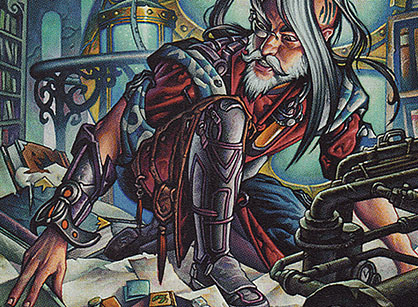
Which brings me to this article today. Wouldn’t it be nice if you could figure out which card actually gives you an edge in your deck? Is Sol RingSol Ring any better than, say, CultivateCultivate? Are you better off with CounterspellCounterspell or Disdainful StrokeDisdainful Stroke? Just looking at the EDHREC card database to figure this out, you would find that CounterspellCounterspell is present in 58,335 decks while Disdainful StrokeDisdainful Stroke is present in 6,650 decks. But is CounterspellCounterspell that much better than Disdainful StrokeDisdainful Stroke? Can we back this up with real gameplay data?
In this new series, Pursuit of Knowledge, we will explore the strength of different cards based on gameplay data and EDHREC statistics. We will try to identify outliers, cards that fail to shine as expected, and more importantly, hidden gems, cards that should be better valued by EDH players.
The Data Set
Recently, the Command Zone team released two podcasts: "Exactly How Good is Sol Ring?" and "Which Color Is the Strongest?" which presented results from analyzing over 300 Commander games. Some of their observations are mind-boggling. For instance, playing a Sol RingSol Ring or Mana CryptMana Crypt in the first three turns could actually decrease the chances of winning a game by 4.4%.
I listened to these two podcasts with great interest. Some of the results that they presented compared the actual game data with Twitter polls they'd performed with their user base. For instance, on the question of increased win percentage of playing a Sol RingSol Ring or Mana CryptMana Crypt in the first three turns, the polls showed that:
- 15% believed that it would have little to no advantage (0-2%)
- 52% thought it made a moderate amount of difference (3-5%)
- 29% thought it would make a big difference (6%+)
- 4% that it would be detrimental.
So, if we're basing deckbuilding choices on players’ instinct, are we missing the point?
Toward the end of the second podcast, Josh and DJ talked about individual cards and how some of them performed better than what was expected of them. For instance, MulldrifterMulldrifter was in ninth place as far as most played card in the games they surveyed, but jumped to fifth place as far as presence in the 'winningest' decks. As another example, Enlightened TutorEnlightened Tutor was present in 27% of the decks, but 39% of the winning decks had Enlightened TutorEnlightened Tutor in them.
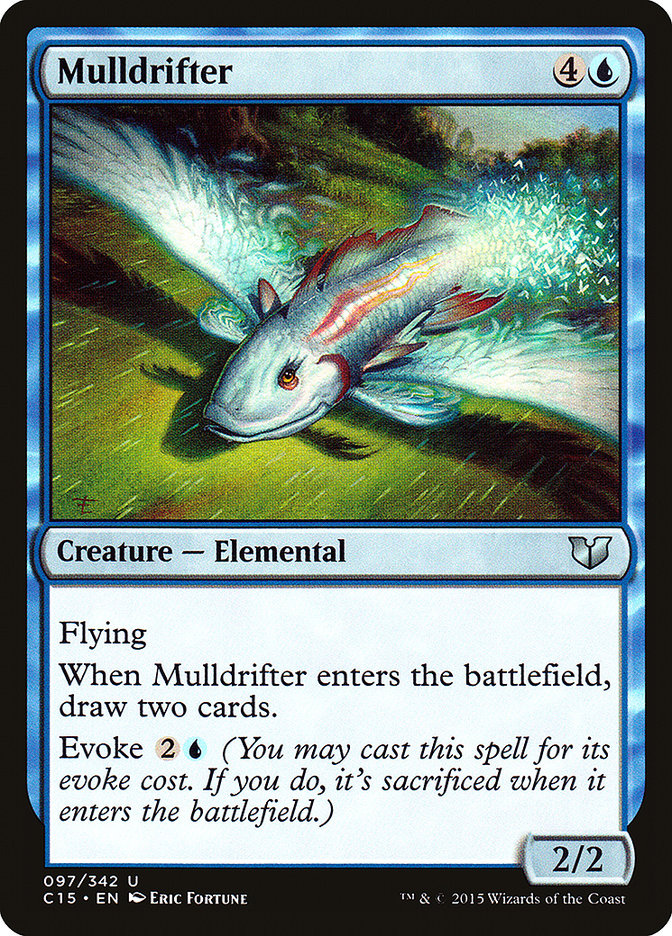
The Command Zone team was kind enough to make their data public and I was very curious to find out more about card performance. Were there any cards that fared much better than expected? Were there cards that were actual duds? Some of the results are quite surprising.
A couple of observations about the methodology before we start. First, the sample size of the games surveyed is not very large, so this is not a scientific experiment. We should also account for the fact that the data was collected from content creators such as MTG Muddstah and CZ's own Game Knights, which means that the data could be self-selected in favor of the most entertaining gameplay, as some of the less YouTube-worthy recordings might have been left on the cutting room floor. As another example, Commander VS, whose videos were also used, is well-known for doing fun themes with their gameplay videos, which also isn't what you might find a typical EDH evening. Despite these biases, I do think that the sample is enough for us to report on some interesting trends.
Second, when deciding if a card was part of a winning deck, the Command Zone team did not watch each and every game from start to finish to figure out if a card was played or not in the winning game. Instead, they recorded it as part of a winning deck simply if it was present in the decklist. I did the same. If we would actually know all cards that were played for each game, then our results would be much more precise. One would hope that we have a large enough sample size that this would not matter, because on average, the cards would come out often enough that we could see a trend. I did take some measures to circumvent this problem however, for instance by eliminating cards that did not appear often enough.
There's so much data to digest, so many cards to evaluate, that it is not possible to present the results of this analysis in one article. For today, let's look at some general results and some in-depth result based on card categories. In future articles, I will take a look at the results in the context of different color combinations.
Diving In
The ten most played cards in the surveyed games were:
Most Played
- Sol RingSol Ring
- Solemn SimulacrumSolemn Simulacrum
- Lightning GreavesLightning Greaves
- CultivateCultivate
- Swiftfoot BootsSwiftfoot Boots
- SkullclampSkullclamp
- Kodama’s ReachKodama’s Reach
- Mind StoneMind Stone
- Chromatic LanternChromatic Lantern
- Swords to PlowsharesSwords to Plowshares.
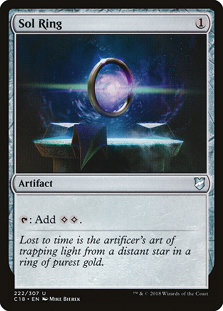
Sol RingSol Ring was played in 810 of the 1,264 decks. However, it was only played in 204 winning decks and 606 losing decks. If Sol RingSol Ring was as good as CZ's Twitter poll deckbuilders thought it would be, it should have been in 64% of the winning decks. Instead, it was in 50% of the winning decks. If we order the cards by win percentage, Sol RingSol Ring ends up in the 222nd spot out of 9,319 distinct cards used in the surveyed games (not bad, but a bit far from what we would expect).
The ten best performing cards were:
Best Performers
- Eternal WitnessEternal Witness
- Enlightened TutorEnlightened Tutor
- Kodama’s ReachKodama’s Reach
- CultivateCultivate
- Vampiric TutorVampiric Tutor
- Sakura-Tribe ElderSakura-Tribe Elder
- Demonic TutorDemonic Tutor
- SkullclampSkullclamp
- Increasing AmbitionIncreasing Ambition
- Triumph of the HordesTriumph of the Hordes.
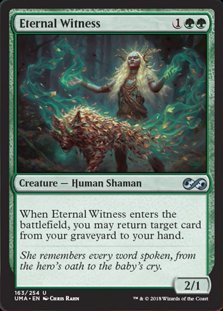
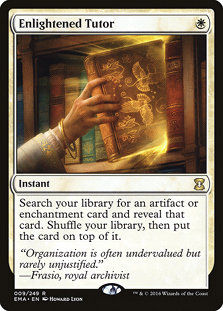
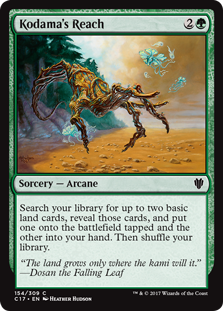
Some of the cards that performed better than expected:
- Abrupt DecayAbrupt Decay, which climbed from rank 1,003 to 58 (+945)
- Astral CornucopiaAstral Cornucopia climbed from 749 to 25 (+724)
- Disdainful StrokeDisdainful Stroke climbed from 743 to 98 (+645)
- Pernicious DeedPernicious Deed climbed from 619 to 87 (+532)
- ArachnogenesisArachnogenesis climbed from 496 to 24 (+472)
- Elves of the Deep ShadowElves of the Deep Shadow climbed from 534 to 79 (+455)
- And Eldritch EvolutionEldritch Evolution climbed from 462 to 18 (+444)
On the other end of the spectrum, the cards that did not perform as well as expected:
- Solemn SimulacrumSolemn Simulacrum dropped 111 spots from 2nd to 113th
- Burnished HartBurnished Hart dropped 648 spots from 13th place to 648th
- Sword to PlowsharesSword to Plowshares dropped 447 places from 10th place to 457th
- Sun TitanSun Titan dropped 508 spots from 48th to 552nd
- Decree of PainDecree of Pain dropped 169 spots from 25th to 194th
Now, ranking can greatly be influenced by the commander’s color identity. For instance, in the data mentioned above, to be able to compare cards from all colors together, I used a five-color color identity. In this scenario, Swords to PlowsharesSwords to Plowshares is ranked 457th, most likely because there are better creature removal spells in other colors. However, in a mono-white deck, Swords to PlowsharesSwords to Plowshares is ranked 94th. This is not as good as expected (8th most played card in mono-white), but better than in a five-color environment. As a side note, Path to ExilePath to Exile seems to fare much better, sitting at rank 25.
If we look at Sol RingSol Ring, in a five-color deck, it is ranked 222nd. However, in an Orzhov build, it ranks 95th and in a mono-white build, it now sits at 39.
Speaking Categorically
Lets now look at the card categories, starting with mana ramp. As far as mana ramp is concerned, two trends show up, depending on availability of green in the commander’s color identity. When green is available to a commander, the best ramp cards are mostly green:
Ramp (with Green)
- Kodama’s ReachKodama’s Reach
- CultivateCultivate
- Sakura-Tribe ElderSakura-Tribe Elder
- Skyshroud ClaimSkyshroud Claim
- Wayfarer's BaubleWayfarer's Bauble
- Fyndhorn ElvesFyndhorn Elves
- HarrowHarrow
- Llanowar ElvesLlanowar Elves
- Wood ElvesWood Elves
- Astral CornucopiaAstral Cornucopia
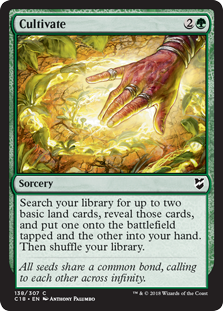
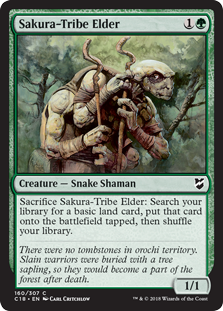
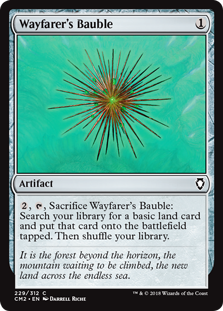
When green is not available, the cards that stand out are mostly colorless:
Ramp (without Green)
- Wayfarer's BaubleWayfarer's Bauble
- Astral CornucopiaAstral Cornucopia
- Expedition MapExpedition Map
- Thought VesselThought Vessel
- Izzet SignetIzzet Signet
- Chrome MoxChrome Mox
- Phyrexian AltarPhyrexian Altar
- Everflowing ChaliceEverflowing Chalice
- Solemn SimulacrumSolemn Simulacrum
- Black MarketBlack Market.
It is interesting to note that Izzet SignetIzzet Signet at 22nd place is the only Signet in the top 100 cards (Orzhov Signet at 227th place is the second-best).
It is not too surprising to see that the most effective mana ramp cards are those that bring lands to the battlefield as opposed to artifacts that produce mana. The Command Zone gameplay stats found that the player with the most lands at end of game won 40% of the time compared to 18% for those who had less lands at end of game.
For card disruption, the best performing cards were:
Disruption
- Krosan GripKrosan Grip
- Beast WithinBeast Within
- Nature's ClaimNature's Claim
- Hero's DownfallHero's Downfall
- Abrupt DecayAbrupt Decay
- ReverberateReverberate
- ShriekmawShriekmaw
- PutrefyPutrefy
- DisallowDisallow
- Disdainful StrokeDisdainful Stroke
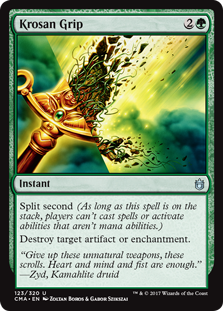
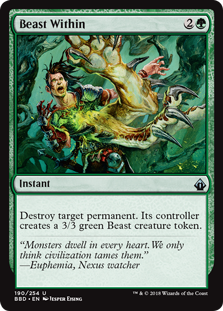
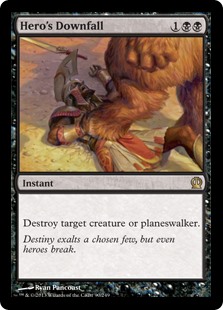
With the exception of ShriekmawShriekmaw, the best disruption spells are able to deal with multiple card types. Beast WithinBeast Within, DisallowDisallow, Disdainful StrokeDisdainful Stroke, and Abrupt DecayAbrupt Decay can target permanents of any type. Krosan GripKrosan Grip and Nature's ClaimNature's Claim can target any artifact or enchantment. PutrefyPutrefy can target creatures and artifacts.
For card advantage, here were the best performing cards:
Card Advantage
- SkullclampSkullclamp
- Sylvan LibrarySylvan Library
- HarmonizeHarmonize
- Dark PetitionDark Petition
- Treasure CruiseTreasure Cruise
- Syphon MindSyphon Mind
- Praetor's CounselPraetor's Counsel
- BrainstormBrainstorm
- Grim HaruspexGrim Haruspex
- MulldrifterMulldrifter
There seems to be is a good balance between black, green and blue as a source of card advantage. Card advantage is an important aspect of a winning strategy and this might explain why black, green and blue have been found to be the best three colors to play according the Command Zone gameplay stats.
Next, mass removal effects:
Mass Removal
- Toxic DelugeToxic Deluge
- Bane of ProgressBane of Progress
- Cyclonic RiftCyclonic Rift
- In Garruk's WakeIn Garruk's Wake
- Crux of FateCrux of Fate
- Pernicious DeedPernicious Deed
- Deathbringer RegentDeathbringer Regent
- FumigateFumigate
- Decree of PainDecree of Pain
- Aura ShardsAura Shards
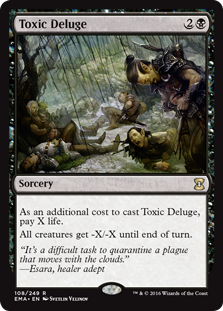
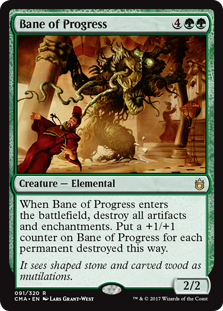
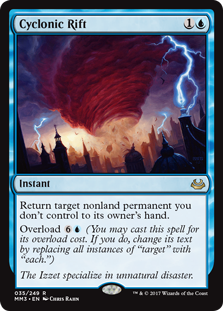
It is hard to understand why a card like Crux of FateCrux of Fate would perform better than a card like DamnationDamnation, unless it would always be played in a deck with Dragons. Another guess is simply that price kept Damnation out of many players' hands, so Crux was the option folks turned to as a replacement. For the other cards, there is a consistent additional upside to clearing the board (only destroying enemy creatures, gaining life, drawing cards, only affecting cards of a certain toughness or CMC cost). This might explain why cards like Wrath of GodWrath of God, Day of JudgmentDay of Judgment, Austere CommandAustere Command or Nevinyrall's DiskNevinyrall's Disk are so low down the list.
For general-purpose creatures, the best performing cards were:
General-Purpose Creatures
- Avenger of ZendikarAvenger of Zendikar
- Zulaport CutthroatZulaport Cutthroat
- Scavenging OozeScavenging Ooze
- Laboratory ManiacLaboratory Maniac
- Butcher of MalakirButcher of Malakir
- MycolothMycoloth
- Blood ArtistBlood Artist
- SangromancerSangromancer
- Kokusho, the Evening StarKokusho, the Evening Star
- Selfless SpiritSelfless Spirit
According the Command Zone gameplay stats, 11% of the players are eliminated by combos. This may explain why we see Laboratory ManiacLaboratory Maniac in the above list.
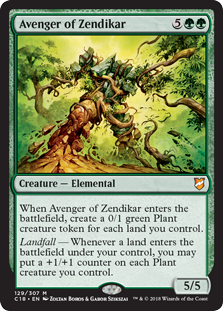
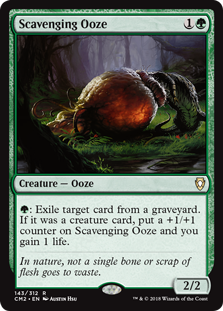
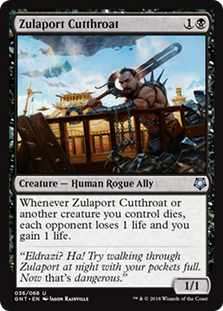
That’s it for today. In the next article, I'll delve into the color combinations by presenting the findings for the best performing cards for Golgari commanders, and brew up a Golgari EDH deck using those recommendations.
Thanks for reading!
References
Martin Dubuc
Martin has been playing Magic since Fifth Dawn. He has explored many formats over the years and his favorite one is Commander. Curious by nature, Martin enjoys deckbuilding as much as playing the game. He likes to experiment new deck archetypes, explore new synergies and learn about crazy combos.
Your opinions are welcome. We love hearing what you think about Magic! We ask that you are always respectful when commenting. Please keep in mind how your comments could be interpreted by others. Personal attacks on our writers or other commenters will not be tolerated. Your comments may be removed if your language could be interpreted as aggressive or disrespectful. You may also be banned from writing further comments.
